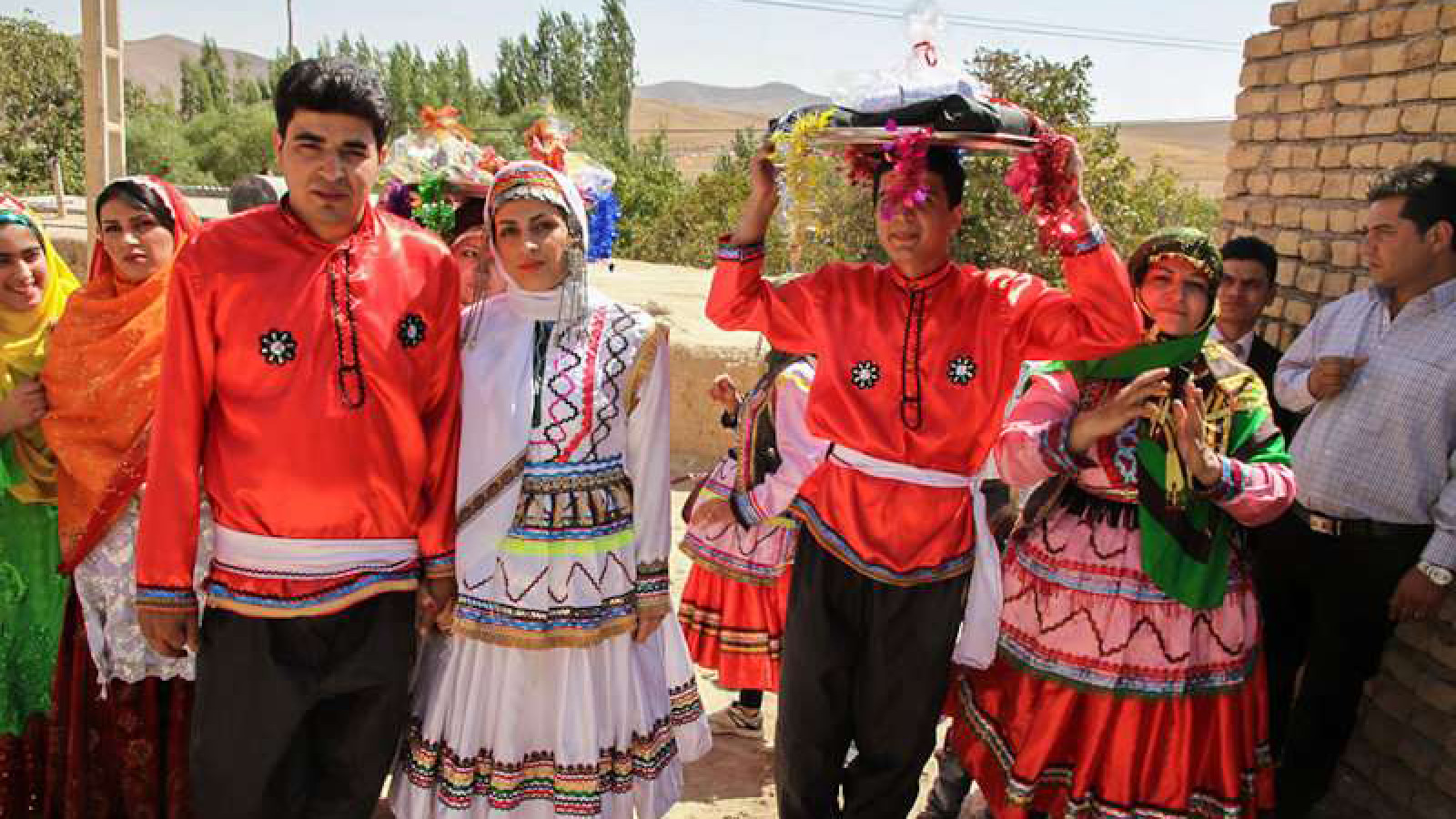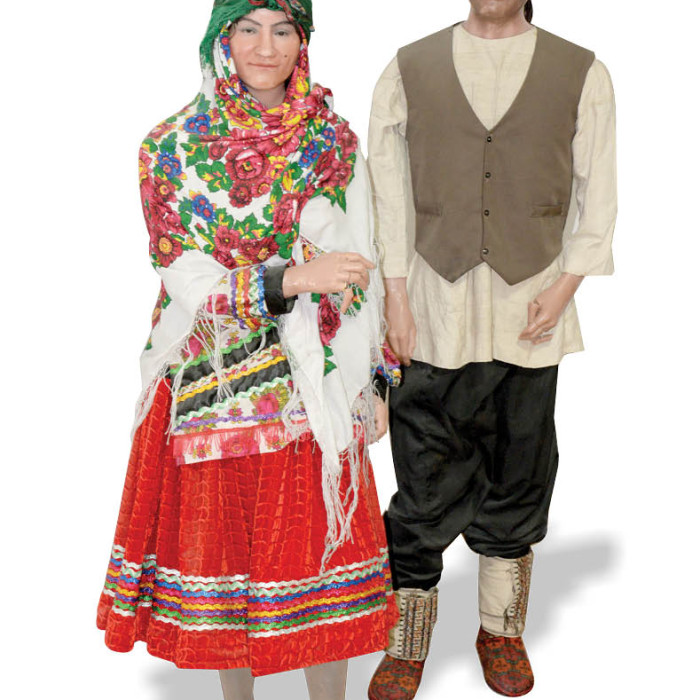
North Khorasan is a small province located in the northeast of Iran that was established in 1383 SH, in result of dividing the Great Khorasan into three parts. this province reaches to Razavi Khorasan, Semnan and Golestan, respectively from south, southeast and west. It also shares land borders with Turkmenistan country from other sides. Different tribes like Turk, Fars and Turkmen live here, however, about a half of the population is constituted of Khorasan Kurds who are known as Kormanj. Like other Kurd people in other regions of the country, they have also their own special culture, costume, language, rituals and unique clothing. Kormanj women wear a cloth consisting of three parts: the upper body clothing, including a dress named Geras and a decorated vest; the lower body clothing including a folded short velvet skirt named Shilvar. Geras is a long sleeveless dress with two slashes, each at one side. It is produced in bright colors and is patterned, its margins are also embroidered. Kormanj people call their vest Jelesqeh and decorate it using many coins. The skirt of Kormanj women are usually red or orange, highly folded, and reaching to knee. They put on large scarfs made of wool and tighten a small, typically dark, piece of fabric over it. Their special shoes are called Charoogh that is locally produced. The brave men of Kormanj also wear a three-part cloth including the dress, pants and vest. Their red dress has two slashes, each at one side, usually made of satin. They wear a belt over their dress. They fasten a piece of fabric around their hand in order to relieve fatigue at work and in time of playing Dotar. The plain black pants are tucked into the patterned socks. The socks are fastened to the foot using a string named Paytabeh and they wear a shoes named Charoogh. They usually wear a plain vest over their dress and tighten a piece of fabric around their collar. It also should be said that recently a new kind of clothing has been introduced as Kormanj, with so much decoration in men’s clothing, similar to that of women, that is completely different from the original clothing of Kormanj, that is a main part of their culture.

